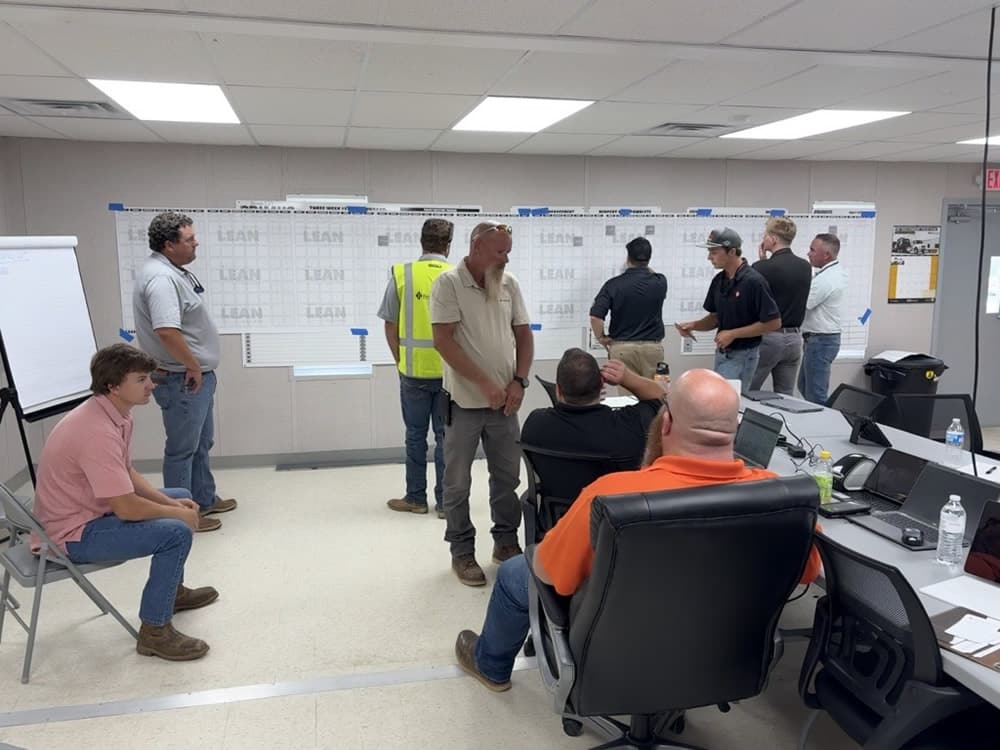Sometimes you show up expecting to hang a few beams, and by the time you leave, you realize you’ve just set the framework for the whole structure. That’s what our pull plan sessions have felt like lately. We walk in looking for dates and durations, and we leave with something bigger – an experience we didn’t even know we needed.
The Sticky Notes Are Just the Surface
Most people come into a phase scheduling meeting thinking the goal is simple: get some durations on the wall, sequence the work, and move on. And yes, the sticky notes give us a roadmap. But the unexpected benefit is the dialogue they spark:
- “If you start here, I’ll be blocked.”
- “If we overlap instead of waiting, you can start a day earlier.”
- “That cure time is going to push me back a day.”
Those quick exchanges surface hidden risks, challenge assumptions, and lead to smarter solutions – long before anyone puts their shovel in the ground.
Collaboration Over Calendars
Pull plan sessions bring everyone to the same table – Supers, Trade Partners, Foremen, Project Engineers. Instead of working in silos, we hash out sequencing face-to-face. That builds trust, strengthens relationships, and creates a plan people feel invested in because they helped shape it.
Take a recent session. We were pulling from the milestone of starting steel. With the Earthwork and Concrete Partners in the room, the conversation turned to the on-site batch plant. The Concrete Partner had a plan for the location, size, and layout. Looked solid on paper. The Earthwork Partner quickly flagged a problem: underground utilities, grading cuts, and timing conflicts. Had we not been in the room together, that misalignment could have turned into a multi-day conundrum a few weeks later. Instead, it was resolved in an hour.
The Value Is in the Dialogue
The schedule on the wall? That’s just a snapshot. It will shift – because jobs always do. But the conversations live on. Teams leave more aligned, more aware of dependencies, and quicker to call each other before small issues snowball into big delays.
A New Perspective on Success
So yes, you’ll get your timeline. But much like realizing you framed out more than a single beam, the real win is the structure you leave with – the framework for better teamwork.
The sticky notes get us in the room. The conversations build a strong project.
Be sure and follow Ashlee McMillan on LinkedIn.










